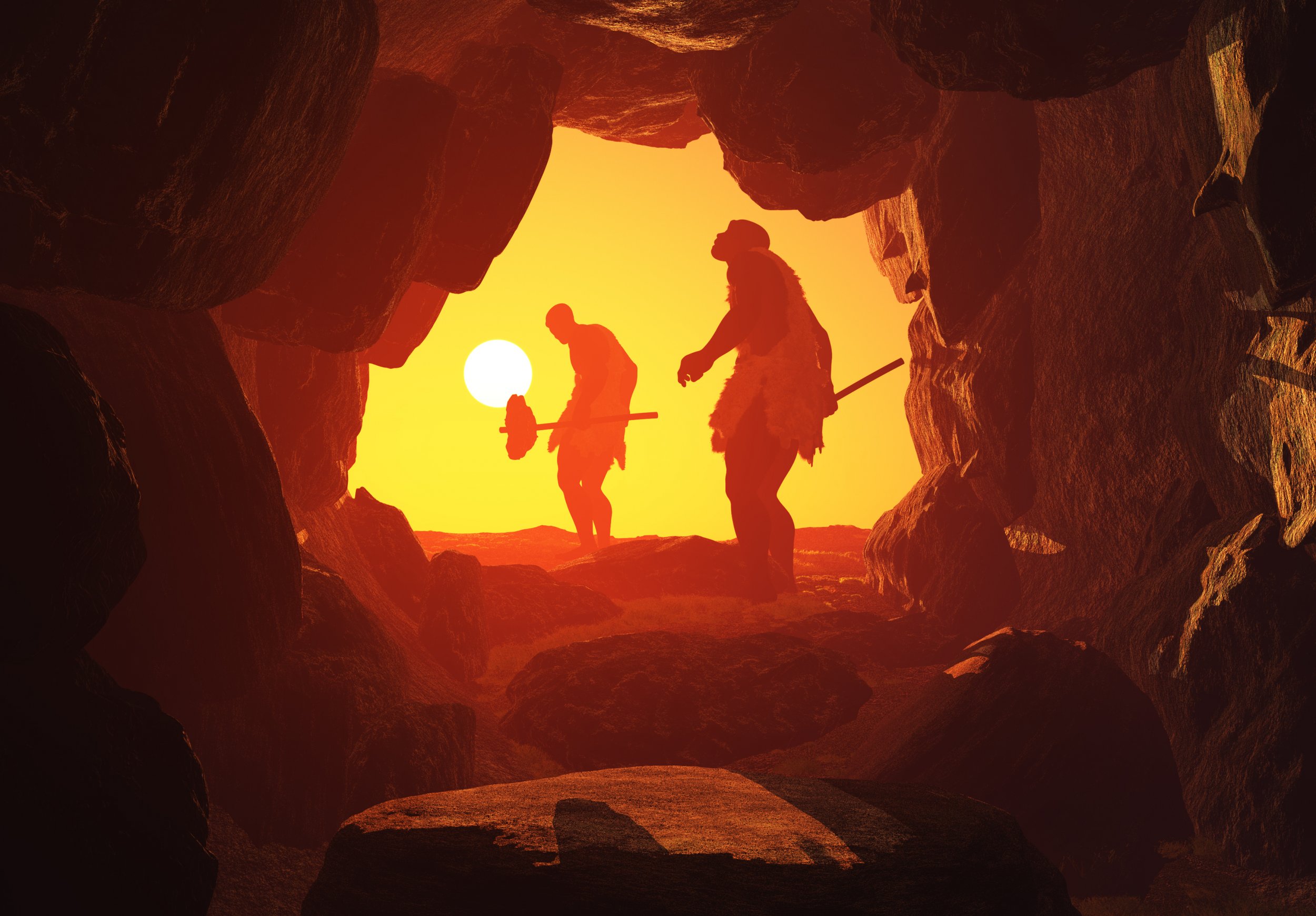
Archaeologists know that, tens of thousands of years ago, Neanderthals had access to one of the most important tools in human history—fire. But an academic debate has raged concerning the source of our ancient cousin's flames. Did they make use of naturally-occurring wildfires? Or were they sophisticated enough to start their own?
Now, a study has revealed the archaic humans used stone tools to create their own fires just like their modern human counterparts, scientists reported in the journal Scientific Reports. Archaeologists analysed 50,000 year old Neanderthal tools for evidence the primitive humans used them to create sparks.
The importance of fire to both our ancestors and our lives today is impossible to understate. From cooking our food to heating our homes, fire's role in our history runs deep. Some anthropologists even think it helped us develop our big, bright, energy-hungry brains.
But without lighters or matches, creating a fire from scratch can be tricky. Throughout history, modern humans have used the "strike-a-light" method to start fires on demand. If you smash a pice of flint against a mineral called pyrite, you can create sparks. With a little bit of well-placed kindling and a well-directed gust of human breath, those sparks can become a fire.
Although there is plenty of evidence Neanderthals could collect fire and maintain it, evidence that our human cousins had the skills to "strike a light" has been lacking.
One of the biggest problems for archaeologists investigating Neanderthals is the disposable nature of many of their tools. These primitive humans would make simple, task-specific devices and throw them away once they were done butchering animals or whittling wood. "This makes it much more difficult for archaeologists to recognize and to identify these tools," study author and Leiden University researcher Andrew Sorenson explained.
Luckily, the research team had access to a collection of hardier tools originally found in France. "These ~50,000 year old 'Mousterian of Acheulean Tradition' bifaces—often called hand axes—were effectively the Neanderthal Swiss Army Knife, used for numerous different tasks and for much longer periods of time," Sorenson said.
If Neanderthals used the hand-axes for pretty much everything, he thought, they might well use them to start fires.
Sure enough, Sorenson and team found mineral traces on the flat sides of the tools. These percussion marks, he said, looked like the ones that appeared on experimental versions of biface tools when they were used to make fire.
"It looks like the Neanderthals would hold the biface in one hand and then strike a piece of pyrite across [its] flat surface… to create sparks that would have been directed onto a dry tinder material, which would then start glowing and used to start a fire," Sorenson said. "The beauty of this method is that by using the flat sides of the biface, the Neanderthals were able to keep the edges of their tools sharp for other tasks."
Read more: Ancient human footprints are oldest ever found in North America
The implications of the research go far byond the flames thenselves. "Having this ability also carries with it cognitive implications," Sorenson said. It shows Neanderthals had a great knowledge of the landscape, as well as that they had the foresight to gather fire-making items for future use, and understand their material, he explained. "They could take two different, inert items—flint and pyrite—and smash them together to produce a completely new material, fire, totally unlike the parent materials.
"I don't know if this fundamentally changes our understanding of Neanderthals, but it does provide yet another instance demonstrating that Neanderthals were no dummies and just as capable as modern humans in using advanced technologies to get by and thrive, even though they sometimes went about it differently," Sorenson added.
Read more: Early humans liked jerky too, ancient jaws suggest
The research supports a view of Neanderthals that were "highly capable in many ways," John Gowlett, a professor at the U.K.'s University of Liverpool who was not involved in the study, told Newsweek.
"Some authors have recently doubted whether Neanderthals always had use of fire, but burnt materials are common on their sites, and pieces of pitch from Augsburg in Germany show that they had the skill to control fire at high temperatures for several hours. Evidence that they could make fire at will may seem surprising, but it fits this picture very well."
Perhaps most exciting of all, Sorenson thinks there probably are more clues to Neanderthal's mysterious lifestyles waiting to be found in the drawers and cabinets of ancient tool collections. "More eyes looking ideally means more eyes finding," he said.
Uncommon Knowledge
Newsweek is committed to challenging conventional wisdom and finding connections in the search for common ground.
Newsweek is committed to challenging conventional wisdom and finding connections in the search for common ground.
About the writer
Katherine Hignett is a reporter based in London. She currently covers current affairs, health and science. Prior to joining Newsweek ... Read more
To read how Newsweek uses AI as a newsroom tool, Click here.








